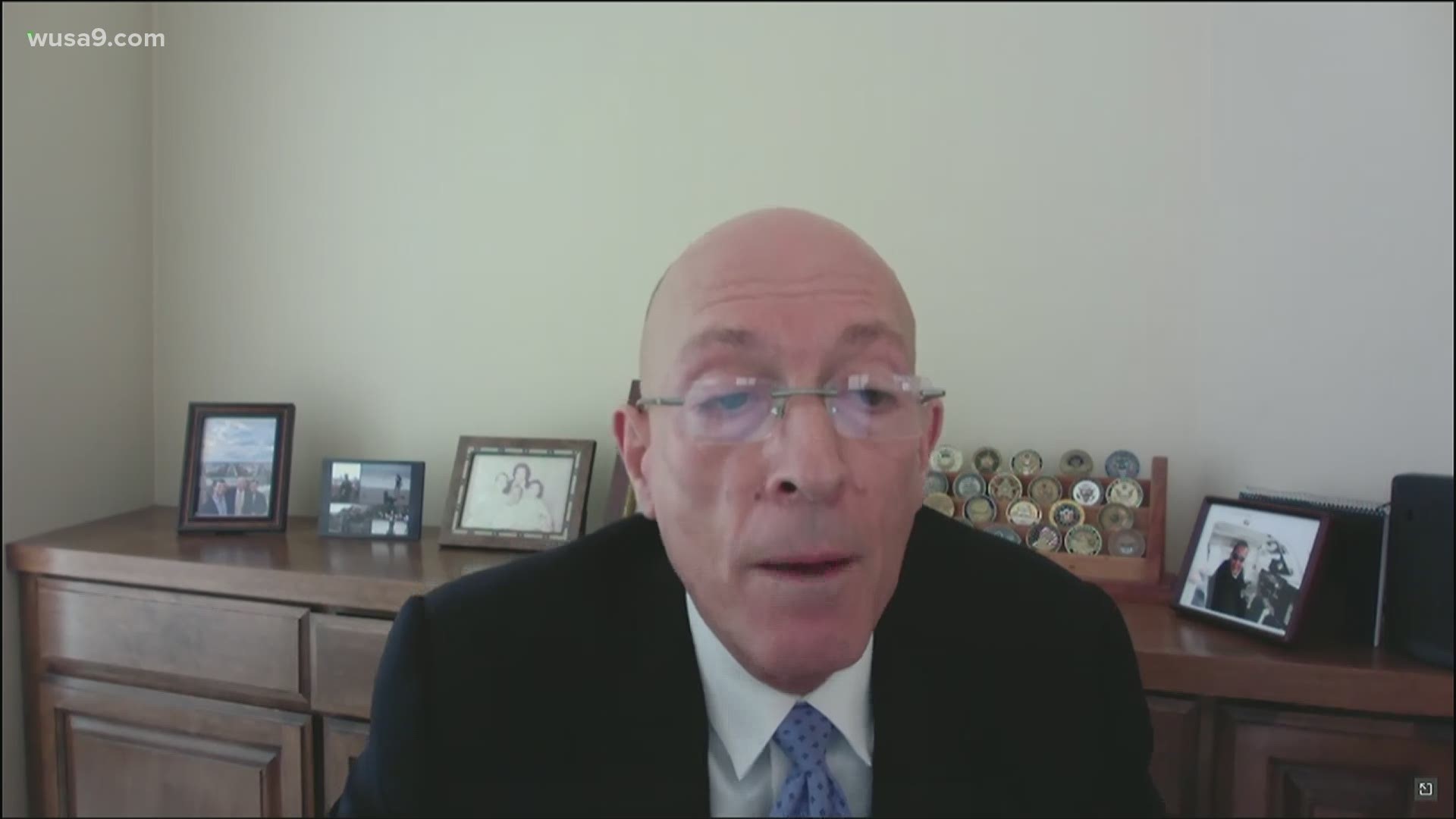WASHINGTON — Could the call for National Guard help at the Capitol Building been made a full hour earlier? Yes, former Capitol Police Chief Steven Sund told a joint Senate committee hearing on Tuesday – although it puts him at odds with former House sergeant-at-arms Paul Irving and video of Irving inside the House Chamber captured by C-SPAN.
The one-hour gap between when Sund says he called Irving, one of three members of the Capitol Police Board that can approve an emergency declaration and request for help from the Guard, was a major point of questioning during the first public hearing about the Capitol riot on Tuesday.
According to Sund, at 1:09 p.m. he called Irving and told him the situation outside was “deteriorating” and that National Guard support was needed.
Irving denies that, and says he has no recollection of a phone call – and no phone record of it. He says he didn’t hear from Sund until after 2 p.m., at which point he and former Senate sergeant-at-arms Michael Stenger swiftly worked on getting help from the DoD.
Compare that to the Department of Defense’s official timeline of the Capitol riot:
- At 1:05 p.m., the assistant secretary of defense gets the first inkling something may be wrong as reports come in of crowds moving toward the Capitol.
- At 1:26 p.m., Capitol Police order the evacuation of the Capitol complex. Sund testified Tuesday that the evacuations were caused by the discovery of two pipe bombs at the RNC and DNC buildings.
- Between 1:26 p.m. and 2:26 p.m., the DoD says at least three phone calls about sending in National Guard support occurred between the Army, Capitol Police, Metropolitan Police, Mayor Muriel Bowser and other D.C. officials.
- At 2:30 p.m. – 18 minutes after the last phone call – senior defense officials meet.
- At 3:00 p.m., the decision is made to send all available D.C. National Guard forces to the Capitol. The guard begins mobilizing four minutes later.
- At 5:40 p.m., 154 newly mobilized National Guard troops arrive at the Capitol to swear in with police and begin securing the campus.
- At 8 p.m., Capitol Police finally declare the complex secure.
After the hearing, Jeremy Art, a social media specialist for C-SPAN, tweeted a video clip from the joint session of Congress on January 6 covering the timeframe between 1:08 p.m. and 1:12 p.m. In the clip, Irving is visible in the left side of the room and does not appear to receive a phone call.
The phone call isn’t the only point of contention between Sund and Irving. According to Sund, he and the sergeants-at-arms met the Monday morning before the riot to discuss the possibility of accepting 125 National Guard troops as extra help for the event. Sund says Irving was concerned about the “optics” of uniformed Guard troops at the Capitol.
Irving repeatedly denied that, including after direct questioning by Sen. Josh Hawley (R-Missouri).
“Senator, I was not concerned about appearance whatsoever,” Irving said.
Irving said the intelligence he and the Capitol Police had received from the FBI suggested the event would be similar to other MAGA marches in D.C. previously – a point he, Stenger, Sund and acting DC Police Chief Robert Contee all agreed on. As a group they unanimously pointed to intelligence failures – including a late email from the FBI’s Norfolk branch on January 5 they say never made it to department leadership.
“We talked it over,” Irving said, “During that call we all agreed that the intelligence did not support the troops and collectively decided to let it go. Michael Stenger then said, ‘How about we put them on standby just in case?’ and that’s what we ended up doing.”
Had the National Guard arrived at 4:40 p.m., instead of 5:40 p.m., it would not have been earlier enough to prevent the need to evacuate Vice President Mike Pence and other members of Congress from the House Chamber, which happened around 2:30 p.m. Nor would they have been able to deter the mob from attempting to break into the Speaker’s Lobby, which ultimately led to the fatal shooting of Ashli Babbitt around 15 minutes later.
The committee requested both Sund and Irving submit phone records from January 6. Members of the House Appropriations Committee will also have the opportunity to question acting Capitol Police Chief Yogananda Pittman during a hearing on Thursday about her timeline of events during the riot.
The next Capitol riot hearing is scheduled for Wednesday at 10 a.m. before the House Judiciary Committee, which will hear from domestic terrorism experts about the warning signs and signals prior to the attack on January 6. You can find a full schedule of this week’s Capitol riot hearings here.
We're tracking all of the arrests, charges and investigations into the January 6 assault on the Capitol. Sign up for our Capitol Breach Newsletter here so that you never miss an update.

